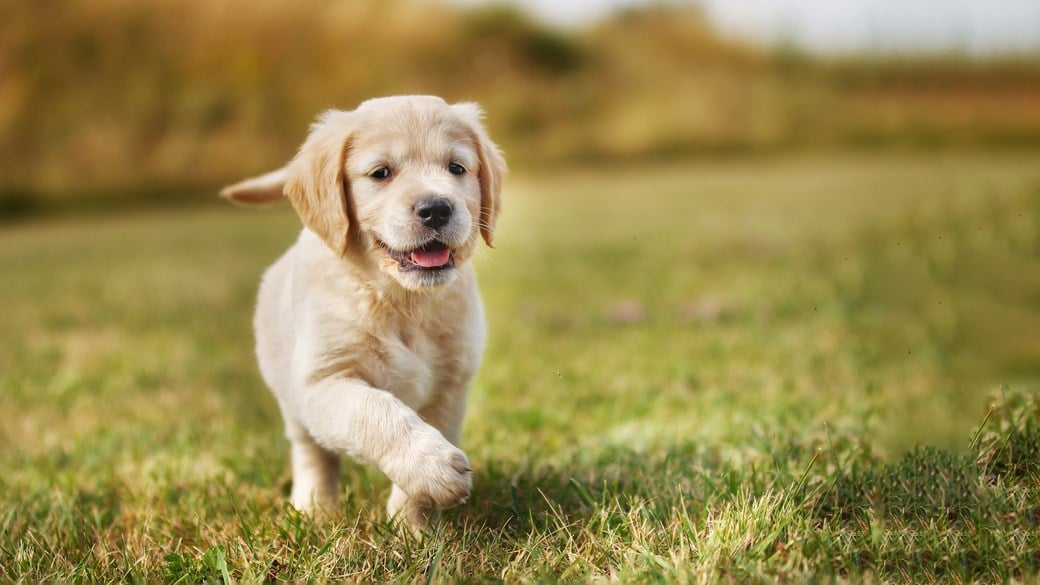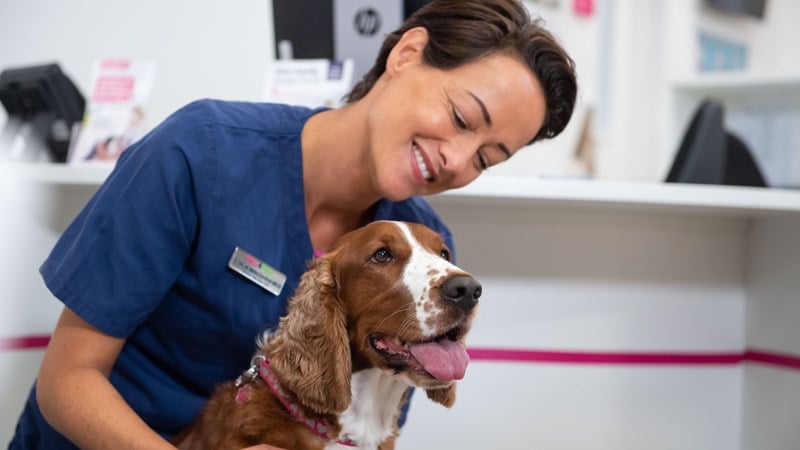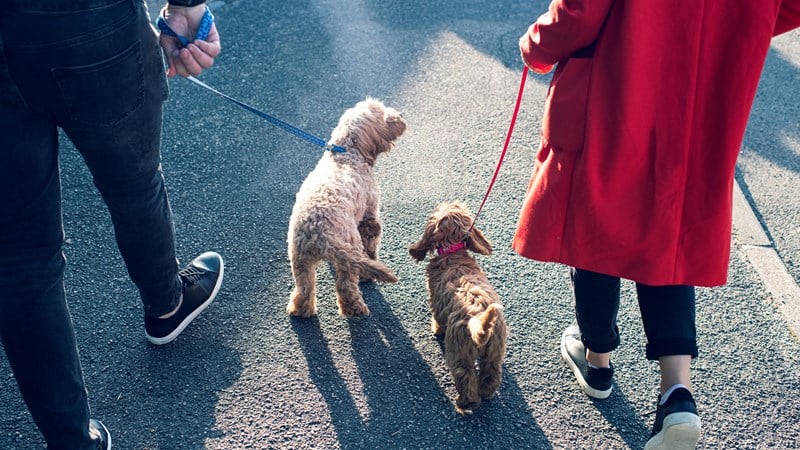
Introducing Puppies To Cats
Read our handy guide on introducing your new puppy to your cat
Getting a puppy is a really exciting time, but not all the family may share your enthusiasm! Cats especially can be very sensitive to change, and making sure they have time and space to get used to your new arrival is key to helping the whole family adjust.
More about on introducing puppies to cats
While it isn’t vital that your puppy has prior positive experiences with cats before, it can be really helpful when bringing a new puppy into a home. If your cat has lived with a dog before, all the better! The most accustomed to the trials (and joys) of co-habituation they are, the easier they will find settling in together. If you have a cat at home and are getting your puppy from a breeder, try and find a breeder that also has cats – this means your cat will be much less novel for your puppy when you bring them home.
It’s also worth considering breeds – while there are many examples of all dog breeds getting along famously with cats, some types are more prone to chasing, such as sighthounds and terriers. This doesn’t mean you cannot have these breed-types in a house with cats, but does mean that making sure your integration is staged and fully supervised will be especially important.
While we get much of our experience of the world through sight, cats rely a lot more on scent. This means that the scent of a home is a really important part of how they identify places they feel secure. Imagine what happens to that scent when a new puppy lands suddenly on the scene!
Changing one thing at a time is the easiest way to help your cat adjust. The slower your introduction between your cat or cats and your new puppy the better.
‘Scent swapping’ can be a really good way to do this, and it can help your new puppy settle in too! It involves slowly mixing the scent of your new puppy into the ‘normal’ scent of house, and can start even before you bring your puppy home! When you visit your puppy, take a soft cloth and wipe it over them while you stroke them. You can then take this scented cloth and rub it at cat height around the house. Places like door frames and the corners of furniture are good spots – these are places your cat will like to mark with their own scents too.
Scent swapping can continue when your puppy gets home, by leaving dog scented cloths/bedding in areas your puppy cannot access but your cat can, and stroking one pet and then the other. To help your puppy recognise your cat's scent too you can also do all this in reverse!
Pheromone diffusers, for both species, can also help keep moods as calm and relaxed as possible. Have a look at the range of pheromone products from our friends in store.
Your cat, however friendly, will need time away from your puppy. This means having a space where they feel secure, and cannot be accessed by your puppy. Ideally, keeping their current favourite area ‘dog-free’ will be the least stressful way to manage this, but that isn’t going to be suitable for all households. If you will need to move your cat in order to provide a quiet place for them, do this ahead of time so they are less likely to feel displaced by your puppy. Move feeders and water bowls up to a high area so they are dog-proof, and make sure bedding and litter trays are in an area where your cat feels secure and can always gain access – toileting, resting and eating are times your cat naturally feels vulnerable, and it’s important to make sure that your puppy cannot disturb them during these times.
If you are struggling, baby gates can be a nice way to separate out two areas without having to keep doors closed all the time – this gives your cat free access to all areas and keeps your dog in their own zone.
It can also be useful to use height to your advantage – cat shelves, or creating other high refuges, can be a great way to give cats room to escape.
It’s also important not to leave both animals together unsupervised until they have spent a lot of positive time in each other’s company – don’t rush it!
The first meeting should take place within the house, and your cat should be able to access their own safe place if they choose to retreat. Choose a time when both pets are likely to be calm – after a walk is a good time for dogs.
The main aim is for the meeting to be positive for both your puppy and your cat. This means chasing is a big no-no. Keep your puppy on a lead (house lines can work really well) or in a puppy crate, so your cat doesn’t feel threatened. This also helps prevent your puppy seeing chasing cats as a fun game, which can be a difficult habit to break.
Your cat is in control here – cats are naturally more wary, and will often take time to assess the situation before approaching. Use treats to keep both parties happy, but don’t try and entice your cat over; let them come in their own time. Treats and a favourite toy are also a great way to keep your puppy slightly distracted from the cat as barking and staring will put your cat off approaching. Keeping your puppy otherwise engaged will help them look less threatening.
Keep the first interaction short and sweet. If your cat has shown some positive interest, then great! If at any point your cat or your puppy seems worried or anxious go back to scent swapping and try again the next day. Keeping meetings short, regular and as positive as possible will build up the confidence of your cat and your puppy. This will likely look like reduced interest from your dog, and calmer body language from your cat.
As your cat and puppy get to know each other, you can take more of a backseat for their interactions. Loose leads will allow your pets to dictate the interaction, while still giving you the opportunity to control your puppy if you need to. If these meetings go ahead calmly, you can consider letting them spend time together without your puppy being restrained, but you should always be present for any shared time until you are completely confident that they are comfortable around each other.
The main thing to remember is to let your pets set the pace. All pets are different, and this means successful introductions can be very rapid, or take weeks or even months to achieve. As with anything new, patience and positive rewards are key. It’s also important to manage your expectations. While cats and dogs can become the best of friends, most simply live harmoniously, and this can work perfectly.
Health Plans to keep your puppy healthy
At Vets4Pets we offer a range of Health Plans that make essential routine treatments more affordable. You'll save money on things like annual vaccinations, flea and worm treatment and routine health check-ups.

Join our free VIP Puppy club
Join the club for expert advice and tailored offers, including £30 off our Complete Care Health Plans

Puppy & Kitten Advice
Giving your pet the best start in life begins with getting the best expert advice.
